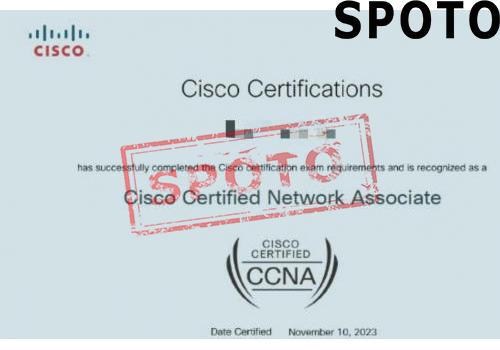
Table of Contents
- Introduction of Cloud automation
- Building a Foundation in Cloud Automation:
- Hands-On Learning with Cisco Tools:
- Streamlining Cloud Workflows:
- Proficiency:
- Enhancing Security with Automation:
- Scaling Operations Seamlessly:
- Integration with Multi-Cloud Environments:
- Continuous Monitoring and Reporting:
- Output:
- Channelization:
- Reducing Operational Costs:
- Staying Updated with Evolving Automation Technologies:
- Empowering Teams for the Future:
- Conclusion
Automating corporate cloud operations is something your IT organization shouldn't neglect or take for granted. Automation is all about things moving in a predefined pattern without much human involvement. Businesses worldwide, including yours, are moving away from manual data centers and towards automated cloud operations. In an article published by Forbes, many chief customer success officers discuss the benefits of automation for organizations in the modern business environment. They also highlight the critical role automation plays in day-to-day operations. By delving into Cisco training, enterprises can empower their teams to take full advantage of cloud automation tools and practices. This article underscores the transformative potential of Cisco training in automating enterprise cloud operations.
Introduction of Cloud automation
Vast use cases and related cloud-native applications were used in private cloud and edge and public cloud settings. Cloud-native apps make the most of the multi-cloud environment's distributed, scalable, and flexible features to set the most emphasis on developing code and producing business value. Cloud automation is technology usage to complete operations with less help from humans to align cloud management procedures.
IT departments are transitioning from getting a department that supports the company to one that drives the organization. IT teams were integrating with business divisions to provide the technology and procedures necessary to satisfy users' urgent requests.
Building a Foundation in Cloud Automation:
Cisco training offers a systematic approach to understanding cloud automation. Before diving into the automation tools and scripts, participants get acquainted with the fundamental principles of cloud operations. This strong foundation ensures that when the automation processes are introduced, the learners can contextualize them within the broader framework of cloud operations.
Hands-On Learning with Cisco Tools:
Cisco's cloud automation training emphasizes practical experience. Participants work with Cisco's suite of cloud automation tools, from essential utilities to advanced orchestration platforms. This hands-on approach ensures that learners who don't understand the concepts are willing to implement them in real-world scenarios.
Streamlining Cloud Workflows:
Automating repetitive and time-consuming tasks can dramatically improve the efficiency of cloud operations. Cisco training introduces best practices for identifying processes ripe for automation and offers tools and methodologies to streamline these workflows. As a result, operations become faster, less error-prone, and more consistent.
Proficiency:
Long-term acquisition and maintenance costs for the current data hub infrastructure layout are high. All of this makes it necessary to have auxiliary elements, including human resources, networking servers, data storage space, and the ability to chill the area where data servers are situated.
Automating business cloud operations reduces these operational expenses significantly and influences total capital expenditures. Automated cloud computations offer excellent insight into what is happening while giving organizations the tools and equipment they need to allocate more resources to other areas.
Enhancing Security with Automation:
Security is paramount in cloud operations. One advantage of automation, when done correctly, is its ability to reduce human error—a significant cause of security breaches. Through Cisco training, teams learn how to automate security protocols, from regular patch updates to real-time threat detection and response. It strengthens the security posture and ensures compliance with industry regulations.
Scaling Operations Seamlessly:
One of the biggest challenges enterprises face with cloud operations is scalability. As the business grows, so does the demand for cloud resources. With Cisco's training in cloud automation, teams learn how to design scalable automation scripts and workflows. It means that as the enterprise expands, the cloud operations can scale to meet the increased demands without manual interventions.
Integration with Multi-Cloud Environments:
Many modern enterprises operate in multi-cloud environments, leveraging services from multiple providers. Cisco training covers the complexities of automating operations across diverse platforms, ensuring seamless integration and efficient management of resources, irrespective of where they get hosted.
Continuous Monitoring and Reporting:
An automated environment requires continuous monitoring to ensure everything runs as expected. Cisco's training introduces tools and practices for automated monitoring and reporting. It allows teams to gain real-time insights into operations, make informed decisions, and address issues proactively.
Output:
When manual data storage is the sole option, IT companies often invest more time and money into routine tasks that, compared to the process, are vital to stakeholders and often have few impacts. Thus, two areas where a limited portion of help got used in the maintenance and operations. After completing sufficient hands-on Cisco training, a networking specialist with a Cisco certification ought to be ready to turn the situation around with the help of automated cloud operations.
Channelization:
By reducing the likelihood of human mistakes and, in contrast, improving the availability of resources on hand, automated business cloud operations will enhance the responsiveness and overall performance of your IT department. The entire process gets optimized such that there is a significant reduction in the distance between the development end and the live state.
Additionally, automating business cloud operations removes the need for manual database server configuration, verifying back-end code, testing, and ongoing server monitoring. Until the parameters are altered by a human moderator, a one-time automation would keep everything on course.
Reducing Operational Costs:
By automating various cloud operations, enterprises can achieve significant cost savings. Automated processes often require fewer resources, resulting in fewer errors, and can operate around the clock without human intervention. The expertise gained from Cisco training translates directly to these operational cost savings.
Staying Updated with Evolving Automation Technologies:
The world of cloud automation is dynamic, with new tools, practices, and technologies emerging regularly. Cisco's training modules are continually updated, ensuring participants get familiarized with the latest advancements in the automation arena.
Empowering Teams for the Future:
Cloud automation is not a fleeting trend—it's the future of cloud operations. By investing in Cisco training now, enterprises are optimizing their current operations and preparing their teams for the future landscape of automated cloud computing.
Conclusion
The promise of cloud automation is vast, from enhanced efficiency and security to cost savings and scalability. However, to harness its potential, a deep understanding and expertise in the tools and practices are essential. Through its comprehensive training programs, Cisco equips teams with the skills and knowledge they need to revolutionize their cloud operations, making automation the cornerstone of their cloud strategy.











